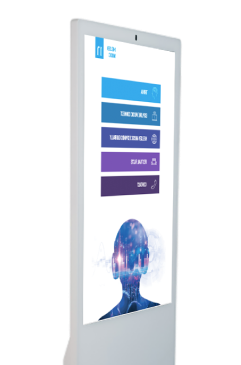

Event Solutions

Our Work

3 Ways to Go Green With Digital Screens
Diminish Paper Wastage with Sustainable Digital Screens Sandwiched between 2001 and 2019, the biosphere lost 386 million hectares of woodland. This loss signifies an almost 10% decrease in tree cover since 2000. Of universal wood harvest, 42% goes to making paper. Printing posters, brochures, bulletin board messages, and more, companies are a prime malefactor in wasting this paper; the average office worker uses an anticipated 10,000 sheets of paper per year. However, most of this paper ends up in the trash bin and, consequently, landfills, where its decomposition produces the biologically damaging greenhouse gas methane. This outcome is unnecessary when posters aimed at customers often fail to capture their attention in a technology-driven civilization. Nothing like static signage, sustainable digital screens and signage can communicate marketing and promotional messages to target audiences and turn heads with multimedia features in HD and 4k Externally, digital signage can increase sales, and internally, it can streamline business communication to increase employee productivity. Turning to digital screens not only diminishes deforestation and illegal logging but protects water too; it requires 50,000 liters of water to make 10,000 sheets of paper. To put this into perception, just 20 liters of water could keep one individual hydrated for ten days (based on the daily suggested amount). In the long run, sustainable digital screens are a greener, cleaner, and even cheaper alternative to the mass paper procedure, helping save the earth. Implement Long-Lasting Sustainable Digital Screens It is a momentary and unsustainable method of marketing. Whenever a brand message changes, new posters or flyers need to be designed, reprinted, and swapped. Digital signage, on the other hand, is a long-lasting answer that can be effortlessly updated using digital signage software, with variations visible on-screen instantaneously. Considerably, even if the plugs are turned on 24/7, many digital screens now have a lifecycle of around 100,000 hours (over 10 years). This detail exposes the sustainability of digital signage and its aids for both the environment and industry. When your digital signage hardware needs exchanging, its components can be salvaged and used for new products. On the other hand, if your business owns old TV, these can be linked to a new media player to convert into digital signage. This choice recycles formerly unusable hardware, extending its lifecycle, and saves money. Implement Green-Powered Energy While some companies may have doubts about the power usage of digital screens, proof demonstrates its power-saving, green benefits. Yet, for those still suspicious, sustainable, green-powered energy can power digital display screens. Solar power energy is a green-powered home of energy rising in fame in the digital signage community. Solar panels can be mounted and connected to the digital screen to transform sunlight into electricity, allowing your digital screen to run on green energy.